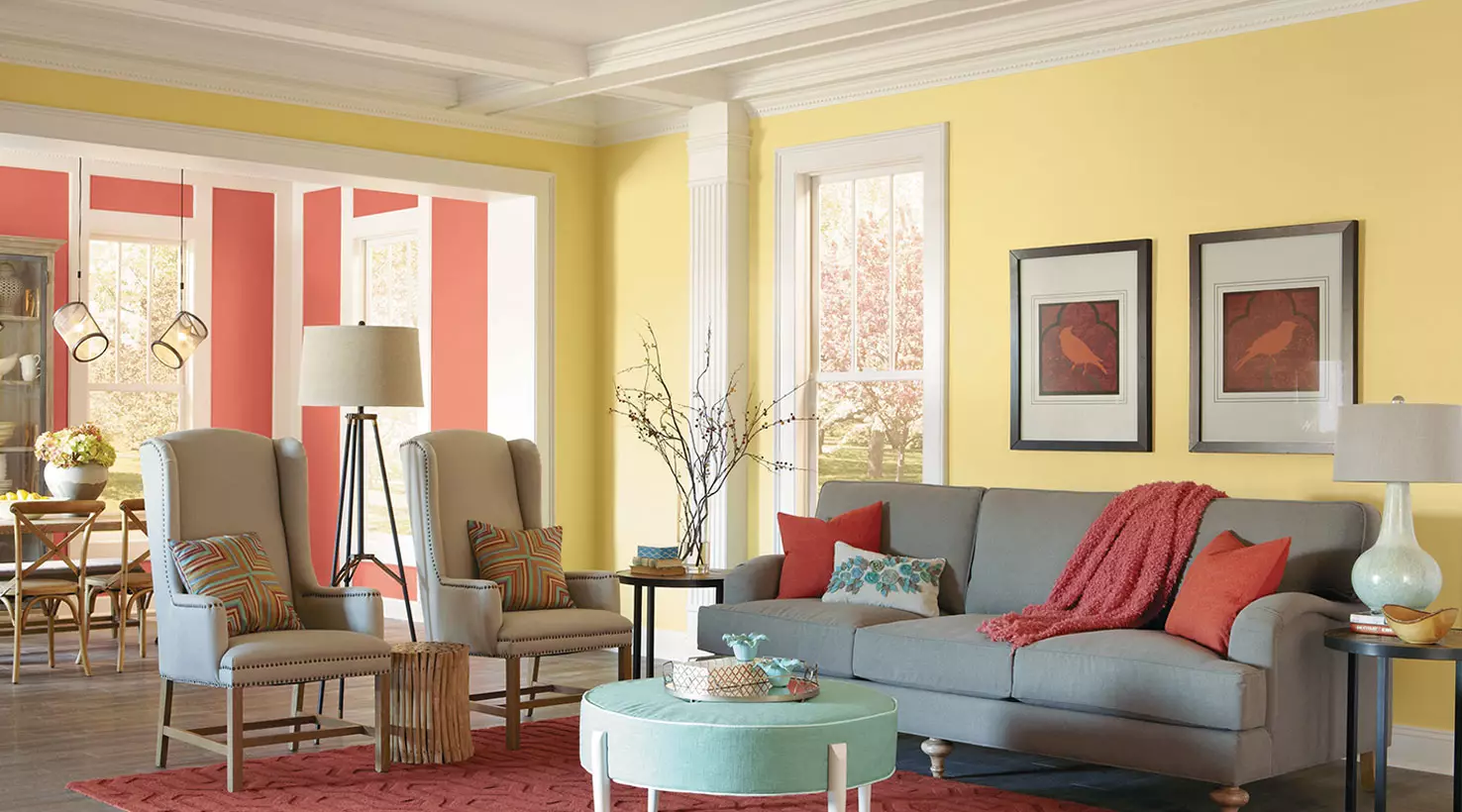Mastering Color Schemes for Home Interior Deco

Anúncios
Your home is a canvas, and the colors you choose can transform it into a masterpiece. Whether you’re moving into a new space or revamping your current one, mastering color schemes for home interior decoration is key to creating a harmonious and visually appealing environment.
Introduction
Setting the tone for your space begins with color. It’s not just about aesthetics; it’s about creating an atmosphere that resonates with you and your guests. Colors have the power to influence moods, evoke emotions, and define the personality of a room.
Anúncios
Understanding Color Psychology
Before diving into the vast world of color schemes, it’s crucial to understand color psychology. Colors can affect our emotions and behaviors. Warm colors like reds and yellows can create a cozy and energetic vibe, while cool colors like blues and greens bring a sense of calm and tranquility. Choose colors that resonate with your personality and the ambiance you want to establish.
The Basics of Color Wheel
The color wheel is your roadmap to crafting appealing color schemes. Primary colors—red, blue, and yellow—serve as the foundation for all other hues. Experiment with complementary color schemes, combining colors opposite each other on the wheel, for a vibrant and dynamic look. Alternatively, analogous color schemes, using adjacent colors, offer a more subtle and cohesive feel.
Anúncios
Neutral Colors for Timeless Elegance
Neutral colors are the unsung heroes of interior decoration. Whites, grays, and beiges provide a timeless elegance that can serve as a blank canvas for your creativity. Incorporate neutral palettes and then add pops of color through accessories, allowing for versatility and easy updates.
Bold and Vibrant Hues for Statement Spaces
For those who crave drama and want to make a statement, bold and vibrant colors are the answer. Create focal points with bold hues, such as an accent wall or a standout piece of furniture. To maintain balance, offset bold tones with neutrals, ensuring your space doesn’t become overwhelming.
Harmonizing with Monochromatic Themes
Monochromatic color schemes offer a sophisticated and harmonious look by playing with different shades of a single color. This approach adds depth to your space, creating visual interest without the need for multiple colors. Experiment with various tones to find the perfect monochromatic balance.
Contrasting Colors for Dynamic Interiors
Contrasting colors can inject energy and vibrancy into your home. By using opposite colors on the color wheel, you create a dynamic visual impact. Carefully balance contrasting colors to avoid clashes, ensuring a harmonious and visually stimulating environment.
Incorporating Nature’s Palette
Nature provides a timeless palette of earthy tones that can bring a sense of calm and connection to the outdoors. Incorporate greens, browns, and blues to create a tranquil atmosphere, embracing the serenity of nature within your living space.
Seasonal Transitions in Home Decor
Consider adapting your color scheme to different seasons. Incorporate warm tones in the fall and cool blues in the summer, allowing your space to evolve with the changing seasons. Easily switch out accessories like pillows and throws to reflect the current season’s color palette.
Clever Use of Accent Colors
Strategically placed accent colors can elevate your interior design. Highlight features with carefully chosen accents, drawing attention to architectural details or focal points in a room. Opt for versatile accent pieces that can easily be swapped to refresh your space.
Considerations for Small Spaces
Small spaces require thoughtful color choices to maximize their potential. Optical illusions with lighter colors can create the illusion of more space, while strategically placing darker hues can add depth and coziness. Experiment with color placement to enhance the perceived size of your rooms.
DIY Color Testing Techniques
Before committing to a color, it’s essential to test it in your space. Sample paints and fabrics under different lighting conditions, considering both natural and artificial light. This hands-on approach ensures that the chosen colors harmonize with your space and meet your expectations.
Trends vs. Timeless Colors
While trends can be enticing, it’s essential to balance them with timeless choices. Consider trendy colors for easily replaceable elements, such as throw pillows or artwork, and opt for timeless hues in larger, more permanent fixtures. This approach ensures your space remains stylish and relevant over time.
Personalizing Your Palette
Make your space uniquely yours by infusing personal touches into your color choices. Customize your color palette to reflect your interests, memories, and preferences. Whether it’s a favorite color or a hue that evokes a special memory, incorporating personal elements adds depth and character to your home.
Maintenance and Updating
Once you’ve mastered your color scheme, it’s important to maintain its freshness. Regularly clean and touch up painted surfaces, and consider updating accessories or accent pieces for a subtle refresh. This way, your home’s color scheme remains vibrant and inviting.
Conclusion
Mastering color schemes for home interior decoration is an art that combines creativity, psychology, and personal expression. By understanding the principles of color, experimenting with various schemes, and infusing your personality, you can transform your home into a space that not only looks good but feels perfect for you.
FAQs
- How do I choose the right color for my space?
- Consider the mood you want to create and your personal preferences. Test samples in your space before making a decision.
- Can I combine multiple color schemes in one room?
- Yes, but it requires careful consideration. Ensure the colors complement each other and create a cohesive look.
- What are some timeless color choices for home interiors?
- Whites, grays, and beiges are timeless choices that provide a versatile backdrop for various styles.
- How often should I update my home’s color scheme?
- It depends on personal preference, but small updates every few years can keep your space feeling fresh.
- Is there a rule for the number of colors to use in a room?
- While there’s no strict rule, a general guideline is to use a dominant color and two accent colors for balance.